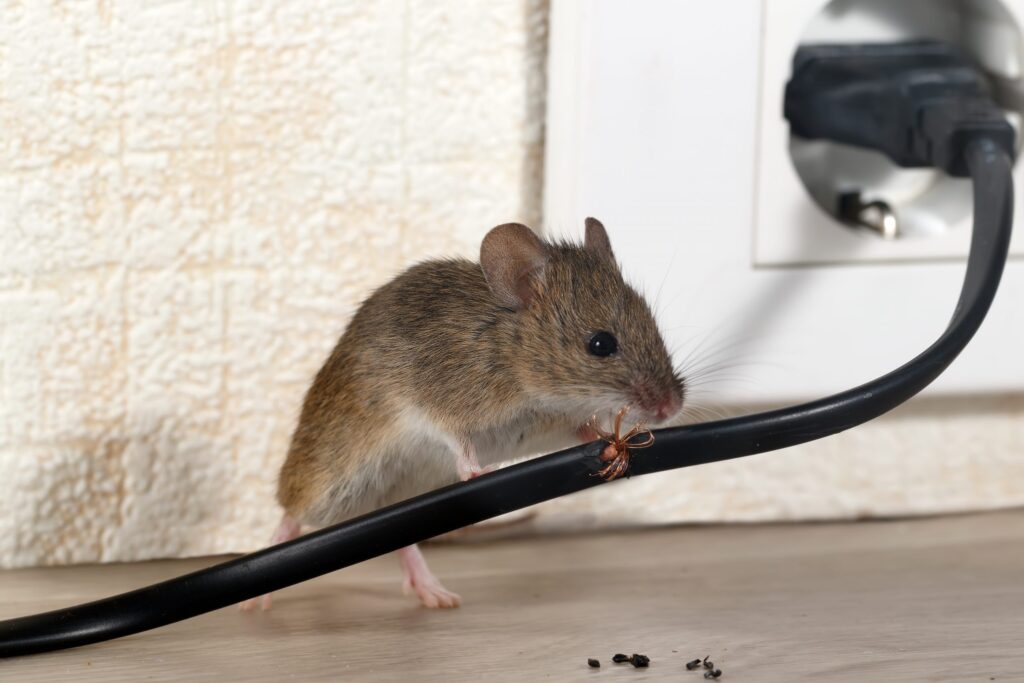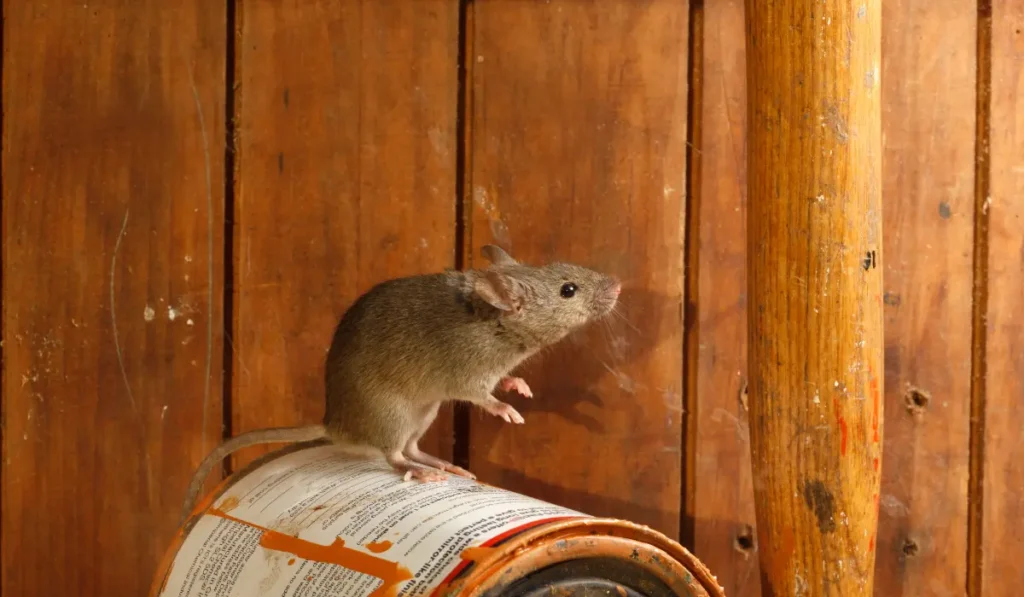Mice are a frequent worry for those wanting to maintain a clean, rodent-free environment. These small creatures slip through tiny openings, scurrying behind walls or appliances and leaving droppings in various corners. In Ohio, including the Massillon area, mouse problems can escalate quickly as temperatures fluctuate through the seasons. Because mice breed throughout most of the year, property owners might notice just a few signs at first, only to discover a significant mouse population later. Massillon’s climate, which includes cold winters and moderately warm summers, encourages mice to seek warm interiors with accessible food sources. Whether it is a historic home near Lincoln Way or a modern building close to local landmarks such as the Massillon Museum, these rodents can invade any structure if conditions permit.
Pest Control Xperts provides mice removal in Ohio, including expert exterminator services tailored to Massillon’s distinct weather patterns and building styles. Our strategies blend precise inspections, safe use of traps or baits, and tips for preventing new infestations over time. Below, we explore how mice infest buildings, the hazards they create, what signals indicate an infestation, and the ways professional solutions surpass limited do-it-yourself approaches. With prompt and focused responses, property owners can avoid structural damage, contaminated food, and ongoing stress caused by hidden mice.
Why Mice Invade in Massillon
Ohio’s climate experiences notable shifts throughout the year, with cold winters driving rodents indoors and mild, at times humid summers giving mice plenty of chances to reproduce if they gain entry. In Massillon, situated near the Tuscarawas River, local moisture or seasonal rainfall might also influence rodent movements:
- Seeking Warmth in Cool Months
Temperatures in Massillon can drop significantly during winter. Mice looking for steady heat enter basements, crawl spaces, or behind walls. Heated buildings shelter them from icy conditions, letting them expand colonies if unaddressed. - Looking for Food and Water
Even the smallest leftover crumbs or unsealed pantry items can attract a mouse. Homes or restaurants that fail to seal food properly provide consistent meals, and any dripping faucets or condensing pipes add the moisture mice need to thrive. - Small Exterior Holes or Gaps
Mice need an opening only the width of a dime to get inside. Cracks near foundation lines, gaps around utility entrances, or loose weatherstrips at doors all function as hidden gates for rodents. - Outdoor Debris or Clutter
Piles of leaves, stacked lumber, or excessive shrubbery near walls can encourage mice to linger. From there, they find ways to slip in, often unnoticed until droppings appear indoors. - Year-Round Breeding Potential
Mice reproduce at a rapid pace. A single female can produce several litters in a year, each with multiple pups that soon reach breeding age themselves. If no one intervenes, a couple of mice easily becomes a significant infestation. - Partial Self-Treatments
Setting a few snap traps may catch some mice but leave the broader population intact if the nest remains. Rodents sensing danger can relocate behind walls, making them harder to eliminate entirely without professional guidance.
Owners in Massillon often discover that mice find ways indoors when they least expect it, especially during temperature extremes or times of year when local wildlife activity increases.
Hazards and Discomfort Linked to Mice
Although they appear small, mice cause significant problems once they populate an interior space:
- Food Contamination
Mice wander over counters, inside pantries, and across kitchen tables, leaving droppings and urine where they walk. Since they might carry bacteria picked up in unsanitary zones, they risk tainting groceries or meal prep surfaces. - Increased Allergens
Mouse droppings and shed fur add allergens to the air. Individuals who already have sensitivities or breathing issues can suffer worsening symptoms. A large mouse population heightens the volume of airborne irritants. - Chewing and Damage
Mice gnaw continually to keep their incisors filed. Wiring, wood framing, cardboard boxes, or plastic containers can all fall victim, risking electrical hazards or structural harm if key materials are weakened. - Rapid Reproduction
A few mice can become a full-blown infestation in weeks. Each litter adds multiple pups, and new generations soon breed as well. Delaying action allows this cycle to continue behind walls, leading to more sightings and contamination. - Anxiety for Residents
Realizing mice roam around at night and leave droppings in random spots can make families uncomfortable, impacting sleep or daily routines. Business owners may fear losing customers if a mouse scurries through a dining or reception area. - Risk of Secondary Pests
Sometimes, where mice linger, fleas or ticks arrive if they hitch rides on the rodents. Removing mice also lessens the likelihood of related pest outbreaks, sparing owners from multiple infestations at once.
Indicators of a Mouse Infestation
Because mice are mostly nocturnal, owners might only witness small hints until the population increases:
- Droppings
Small, dark pellets with pointed ends appear behind appliances, near baseboards, or inside cabinets. Fresh droppings look shiny and moist, while older ones grow dull. The amount and location help estimate how many mice exist. - Gnaw Marks
Holes in cereal boxes, chewed corners of stored goods, or bite marks on wood reveal mice actively exploring for food. Fine tooth patterns might show where they shaved down edges to fit through or gather nesting materials. - Nesting Materials
Mice build nests using shredded paper, fabric, or insulation. Discovering small piles of torn fibers or soft items in corners or hidden cavities signals ongoing breeding. Nests are usually close to a reliable food source. - Noises at Night
Owners may hear light scratching or rustling in walls, ceilings, or behind cabinets. Sometimes squeaking noises emerge if the mouse population is large enough. These sounds increase after dusk when mice forage. - Dark Smears or Tracks
Mice leave oily smudges along walls where their bodies brush repeatedly. In dusty areas, small footprints might appear around entry holes, confirming their path of travel. - Pet Staring or Pawing
Cats or dogs may sense mice behind walls, acting fixated on specific spots. If pets scratch or sniff persistently in certain areas, that might be where mice enter or nest.
Why a Professional Exterminator is Helpful
While some owners try basic traps or poisons, comprehensive infestations often need specialized knowledge:
- Accurate Colony Assessment
A trained exterminator quickly pinpoints nest sites, entry routes, and the scale of activity. Without these insights, do-it-yourself steps may overlook hidden spots where mice remain. - Strategic Bait and Trap Placement
Professionals set traps or tamper-resistant bait stations in the exact runways mice use. Poorly placed traps often yield minimal catches while allowing the rest of the colony to continue undisturbed. - Safe Product Usage
Handling rodenticides incorrectly can endanger people or pets. An experienced team follows guidelines, protecting children or animals. They also use non-repellent or specialized baits that avoid warning mice away. - Exclusion Tactics
Eliminating existing mice does not solve re-entry if structural gaps remain. Exterminators highlight or handle sealing holes in foundations, along door edges, or near pipes. This approach prevents new mice from taking the place of those removed. - Time Efficiency
Experimenting with store products can waste weeks if the nest keeps producing new pups. A structured plan shortens the timeline and spares owners from repeated droppings or damaged goods. - Follow-Up and Confirmation
If rodent eggs or new litters appear after the initial service, professionals revisit promptly. They confirm all mice are eliminated, sometimes adjusting baits or trap placements as necessary.
Pest Control Xperts: Mice Removal in Ohio
In Massillon, Pest Control Xperts handles infestations for local homes and businesses. Our process ensures each mouse is addressed and future access is blocked:
- Property Inspection
An exterminator starts by surveying kitchens, basements, or any area where owners have seen droppings or chewing damage. Examining exteriors for cracks or potential entry holes helps form an overall map of rodent activity. - Tailored Removal Plan
Depending on severity, we choose snap traps, multi-catch devices, or bait stations set along walls or in corners. If large or repeated populations emerge, we might combine multiple strategies, ensuring mice cannot simply move to another part of the building. - Discreet Bait and Trap Placement
We place devices out of main traffic zones, where mice typically run after dark. This helps protect occupant safety or daily routines. Baits are secured so that only mice contact them. - Sanitation and Storage Tips
Owners learn how to store cereals, grains, or snacks in sturdy containers mice cannot chew through. We encourage thorough sweeping and wiping counters to remove crumbs. Fixing leaks or drying basements also cuts off water sources mice need. - Sealing Entry Points
After removing active mice, we advise filling or patching cracks near pipes, weatherstripping doors, or using metal screens over vents. Without these steps, new mice likely find the same paths indoors. - Follow-Up if Needed
Some advanced infestations call for multiple visits, especially if eggs hatch or overlooked corners remain. We stay available to double-check progress, reposition traps, or confirm that droppings no longer appear.
Everyday Steps to Prevent Mice
Once active mice are gone, maintaining these practices deters future rodent issues:
- Keep Food Sealed
Transferring snacks, pet kibble, or flour from flimsy packaging into plastic or glass containers denies mice easy entry. Keeping counters free of crumbs also diminishes interest from foraging mice. - Promptly Remove Trash
Mice rummage through open garbage. Using bins with secure lids indoors and discarding waste frequently reduces attractive odors. Emptying outdoor cans regularly likewise helps. - Trim Vegetation Near Foundations
Overgrown shrubs or stacked debris near walls shelters mice. A clear border of a couple of feet around exteriors, plus consistent lawn care, makes it harder for mice to linger near your property. - Check Seals After Seasonal Changes
Because Massillon winters can expand or contract materials, new gaps might appear in foundation lines or around windows. Inspecting each autumn and spring reveals cracks that need sealing. - Monitor for Early Signs
Seeing a single mouse or fresh droppings warns that more might be hidden. Putting down a quick trap or contacting a professional soon often stops a wider outbreak. - Move Clutter Off Floors
Organizing basements or closets so that boxes sit on shelves reduces dark hideouts. Mice favor quiet, seldom-disturbed corners. Periodically moving stored items also helps reveal droppings early.
Why People in Massillon Pick Pest Control Xperts
Although many offer rodent control services in Ohio, residents choose our team for reasons such as:
- Local Knowledge
Serving Massillon means familiarity with local neighborhoods, climate patterns near the Tuscarawas River, and typical architecture. We identify vulnerabilities faster, focusing on the likely entry points that mice favor. - Skilled Exterminator Techniques
Our staff stays informed on updated rodent baits, trap technologies, and integrated pest management. We quickly differentiate a mild mouse presence from a deep infestation requiring multiple steps. - Safe Product Use
We handle rodenticides carefully, often relying on tamper-resistant bait stations or specialized traps. This balance kills mice effectively while guarding children or pets. - Easy Communication
We explain how to get rid of mice in Massillon through a plan that merges occupant tasks like storing foods in canisters with expert treatments. Clients know what to expect and can ask questions freely about occupant guidelines or timelines. - Flexible Solutions
Each building, from older properties near the city center to newly built homes on the outskirts, has distinct features. We adapt product placement, occupant instructions, and re-check intervals to each scenario. - Ongoing Support
If owners spot new mice soon after the initial round, we reassess swiftly. Large infestations occasionally demand more coverage or repeated visits to end the breeding cycle thoroughly.
Contact Pest Control Xperts for Mice Removal in Ohio
A single mouse sighting frequently indicates deeper activity behind walls, in basements, or under kitchen appliances. By not addressing the issue, owners risk finding droppings in cereal boxes, chewed wiring, or constant night-time noises. Pest Control Xperts offers mice removal in Ohio for Massillon residents who want immediate, reliable relief from rodents. Our exterminator pinpoints critical nesting zones or runways, places discreet traps or baits with occupant safety in mind, and advises on sealing cracks or disposing of leftover food that draws mice.
Acting at the earliest hints of a mouse problem saves frustration, money, and the worry of contamination. Through a thorough plan that covers both interior extermination and exterior exclusion, we ensure rodents cannot simply re-enter later. If extensive nesting or advanced breeding is found, multiple treatments or visits may be necessary, each building on the last to remove stragglers or newly hatched pups. Meanwhile, owners learn how to store groceries properly, maintain cleanliness under cabinets, and keep yard clutter away from foundations.
Take the next step by contacting Pest Control Xperts. We serve Massillon and other Ohio communities, tailoring our approach to occupant schedules and occupant concerns about products. Once mice stop roaming kitchens or leaving droppings in hidden corners, owners reclaim a comfortable daily routine. Along with removing current mice, we stand ready to highlight or correct vulnerabilities that let them in, preserving a rodent-free environment over time. Through collaboration and professional oversight, families or staff can move forward without the hassles caused by active mice infestations.





